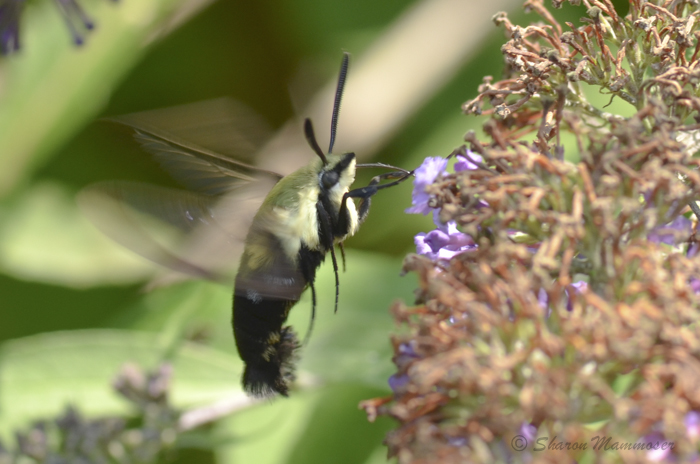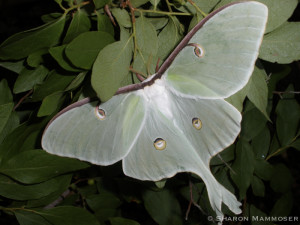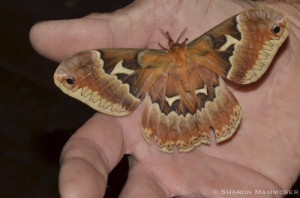 Many people see this at their flowers and think it’s a hummingbird. With their “furry” green bodies and burgundy wings, they do look like a hummingbird so this confusion is easy to understand. But this creature is actually a type of insect, a kind of moth called a Hummingbird Clearwing Moth. Having a wingspan just over 2 inches, this moth frequents flowers to drink the sweet nectar with its long proboscis (pronounced pro-ba-sis) in the same way butterflies do. The Hummingbird Clearwing Moth can be found throughout the eastern half of the United States and Canada. Like a handful of other moths, it is active during the day, rather than at night as is the habit of most moths.
Many people see this at their flowers and think it’s a hummingbird. With their “furry” green bodies and burgundy wings, they do look like a hummingbird so this confusion is easy to understand. But this creature is actually a type of insect, a kind of moth called a Hummingbird Clearwing Moth. Having a wingspan just over 2 inches, this moth frequents flowers to drink the sweet nectar with its long proboscis (pronounced pro-ba-sis) in the same way butterflies do. The Hummingbird Clearwing Moth can be found throughout the eastern half of the United States and Canada. Like a handful of other moths, it is active during the day, rather than at night as is the habit of most moths.
The latin word for butterflies and moths is Lepidoptera. This translates to “scale wing” and is an excellent name since butterflies and moths have wings that are covered with thousands of microscopic scales. Have you ever touched a butterfly or moth wing and had some fine “powder” on your fingers afterward? These are some of the scales that have rubbed off, one reason why it is best not to handle the wings of a butterfly or moth.

More than 90% of Lepidoptera are moths! This is amazing given that most people only recognize butterflies, mostly because butterflies are out flying during the day when people are more likely to see them. Worldwide there are more than 300,000 species of Lepidoptera. In North America there are 11,000 species, with just 679 of them butterflies.
Most moths are nocturnal (active at night) but some, like the Hummingbird Clearwing, are not. Another myth about moths is that they are all white. Some of the most beautiful species of Lepidoptera are moths, including some larger ones, with a five inch wingspan, that live in our area, including luna, polyphemus, cercropia and tulip tree moths. Have you ever been fortunate enough to see one of these? They are really beautiful!

If you want to read about how you can attract moths to your yard, Click HERE. Or if you want to read about a lovely moth, called a Tulip Tree moth, click HERE.


1 thought on “Weekly Puzzler Answer #31”
Comments are closed.